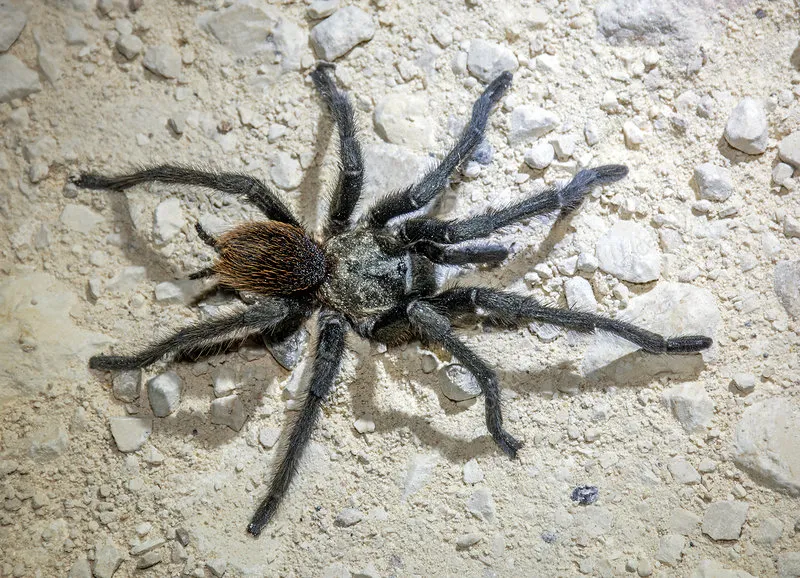Texas Tarantulas Unveiled An Introduction
Texas, a state known for its vast landscapes and diverse ecosystems, is also home to a fascinating array of wildlife, including a number of tarantula species. These large, hairy spiders, often misunderstood, play a vital role in the state’s ecosystem, helping to control insect populations. This guide delves into some of the most common and captivating tarantula types found in Texas, providing insights into their identification, habitats, and behaviors. Understanding these creatures not only fosters appreciation for their unique characteristics but also promotes responsible conservation efforts to ensure their survival in the face of habitat loss and other environmental challenges. Join us as we explore the amazing world of Texas tarantulas!
Texas Tan Tarantula (Aphonopelma hentzi)
The Texas Tan Tarantula, scientifically known as Aphonopelma hentzi, is perhaps the most iconic tarantula species in the Lone Star State. Its common name is derived from its predominantly tan coloration, which provides excellent camouflage in its natural habitat. These spiders are relatively docile, making them a popular choice for tarantula enthusiasts. The Texas Tan Tarantula is a symbol of the state’s diverse arachnid population, representing the beauty and importance of these creatures in the local environment. This species is well-adapted to the Texan climate, thriving in the varied landscapes that the state offers.
Characteristics of the Texas Tan Tarantula
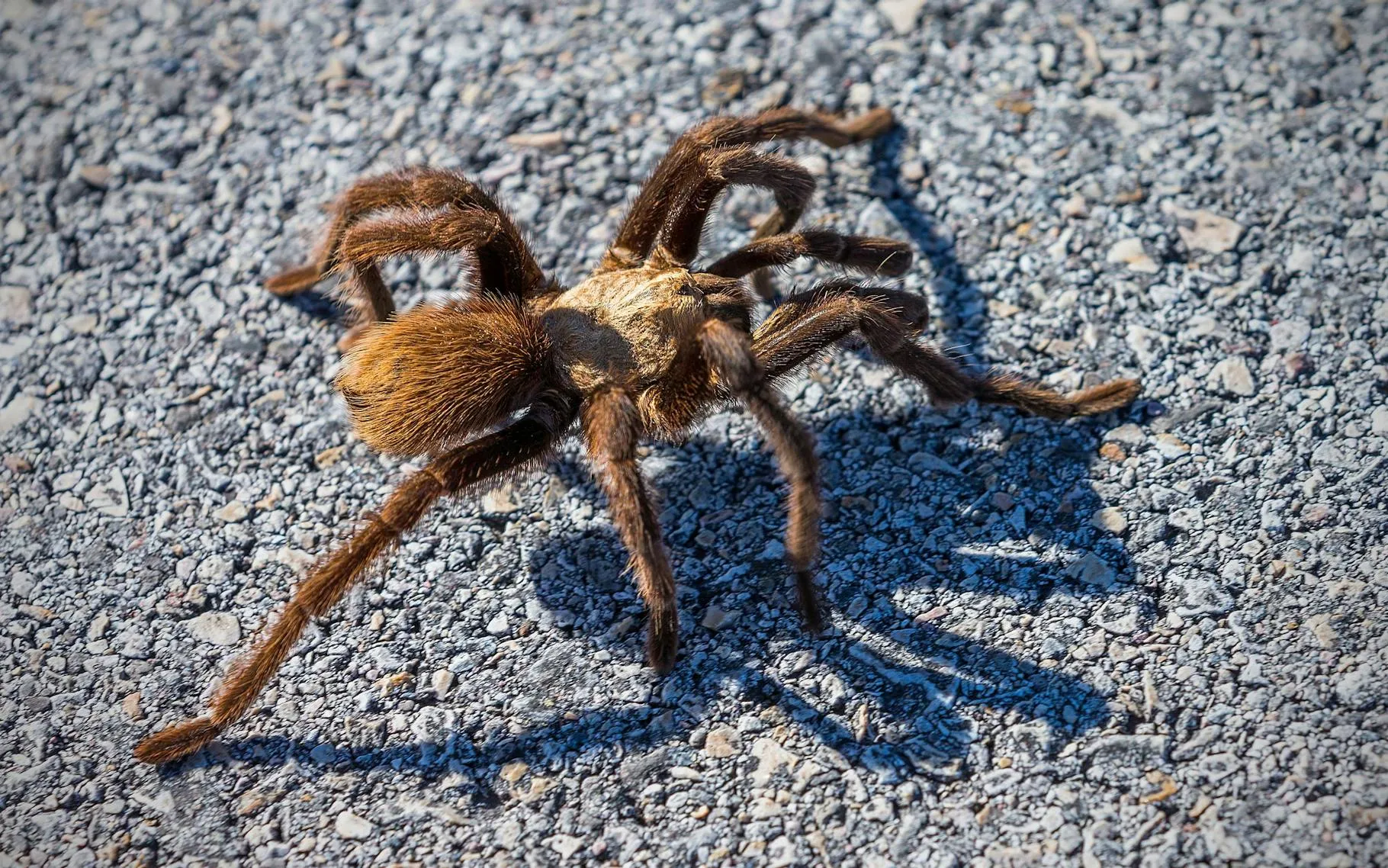
The Texas Tan Tarantula is a large spider, with females often reaching a leg span of up to 5 inches. They are characterized by their tan to brown coloration, with the shade varying slightly depending on their age and the specific environment they inhabit. Their bodies are covered in fine hairs, contributing to their fuzzy appearance. They possess eight eyes, arranged in two rows, providing them with excellent vision for detecting prey and predators. These spiders, like all tarantulas, have fangs used to inject venom, which is typically not harmful to humans. Their overall appearance reflects their role as skilled hunters and adaptable survivors in the Texan wilderness.
Habitat and Distribution of the Texas Tan Tarantula
Texas Tan Tarantulas are widely distributed across Texas, particularly in the central and southern regions. They are commonly found in grasslands, scrublands, and open woodlands, where they construct burrows in the ground. These burrows provide shelter from the harsh Texas sun and protection from predators. The spiders prefer well-drained soil, often near rocks or other structures that help maintain the integrity of their burrows. Their habitat extends throughout much of the state, with the highest concentrations in areas that offer both suitable soil conditions and ample prey availability. Their ability to adapt to different environments has enabled them to thrive across a significant portion of Texas.
Diet and Behavior of the Texas Tan Tarantula
The Texas Tan Tarantula is a nocturnal hunter, primarily active at night. Their diet consists mainly of insects, such as crickets, grasshoppers, and beetles, but they will also consume other arthropods and occasionally small vertebrates. They are ambush predators, waiting patiently near their burrows for prey to come within striking distance. When a target is close enough, they quickly emerge, inject venom to immobilize it, and then consume their meal. Females can live for several years, while males typically have a shorter lifespan after reaching maturity. These tarantulas exhibit a fascinating mix of patience, agility, and survival skills, making them a key part of the ecosystem.
Texas Brown Tarantula (Aphonopelma anax)
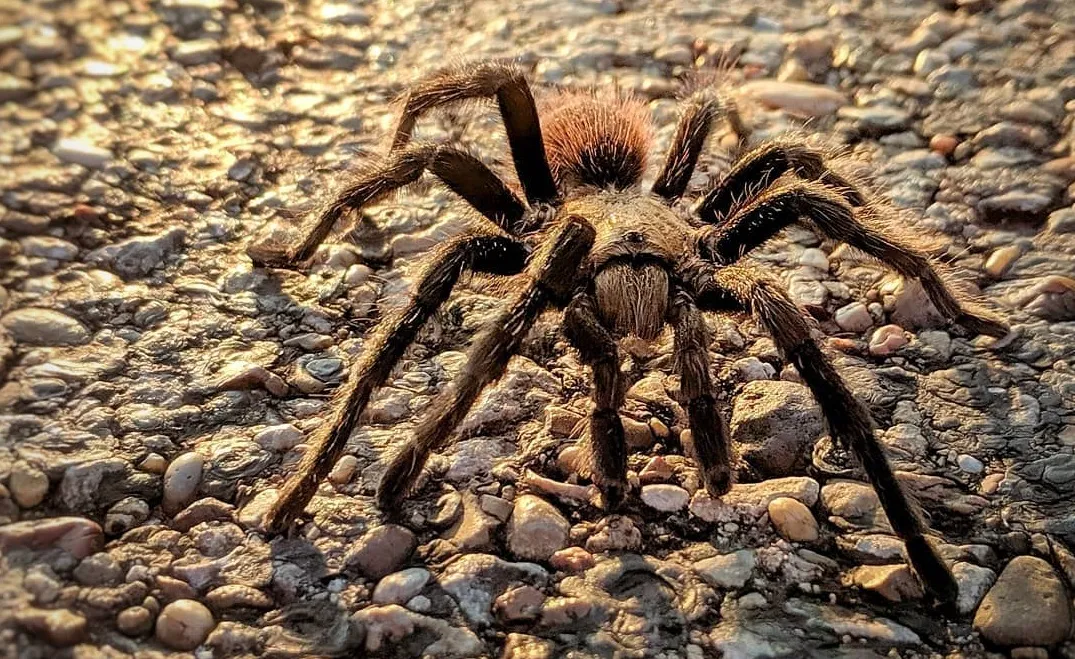
The Texas Brown Tarantula (Aphonopelma anax) is another common species found within the state, often mistaken for the more well-known Texas Tan Tarantula due to their similar size and coloration. However, careful observation of specific features can help differentiate them. This species, like other tarantulas, plays a significant role in the local ecosystem by controlling populations of insects and other small invertebrates. Their presence highlights the ecological richness of the Texan landscape, reminding us of the delicate balance within nature. The Texas Brown Tarantula, though similar in appearance to the Texas Tan, holds its own distinct place within the state’s arachnid community.
Identifying the Texas Brown Tarantula
Distinguishing between the Texas Brown Tarantula and the Texas Tan Tarantula requires attention to detail. The Texas Brown Tarantula generally displays a darker brown coloration, often with subtle variations in the shade across its body. Careful examination of the carapace (the upper shell of the cephalothorax) and leg coloration can provide additional clues. Some individuals may have slightly different patterns of hair distribution on their legs and bodies. Observing the overall build and size of the spider, alongside these subtle color and pattern variations, will help in accurate identification. Close inspection is key when differentiating between similar species of tarantulas.
The Texas Brown Tarantula’s Lifestyle
Like the Texas Tan Tarantula, the Texas Brown Tarantula is primarily nocturnal, spending the daylight hours within its burrow. They are ambush predators, waiting patiently for prey to venture close enough for a quick strike. The lifecycle of the Texas Brown Tarantula involves molting, where they shed their exoskeleton to grow. This process leaves them vulnerable, making their burrows critical for protection. The females often live for many years, while males generally have shorter lifespans after reaching maturity and mating. These tarantulas showcase an impressive ability to survive and thrive in the harsh Texas environment, demonstrating complex behaviors.
Where to Find the Texas Brown Tarantula

The Texas Brown Tarantula is found across a wide range of habitats in Texas. They are frequently encountered in grasslands, open woodlands, and scrublands, often constructing burrows in areas with well-drained soil. They seem to have a preference for environments that offer both shelter and a good supply of insects and other small animals for food. Though they share many habitat characteristics with other species, careful observation can help identify locations where the Texas Brown Tarantula is more likely to be found, increasing the chance of a close encounter and opportunity for study. Local knowledge and awareness of their preferred habitats are vital to appreciating these creatures.
Oklahoma Brown Tarantula (Aphonopelma marxi)
The Oklahoma Brown Tarantula (Aphonopelma marxi) is another member of the Aphonopelma genus, found in Texas, although its distribution is not as extensive as the Texas Tan or Brown Tarantulas. It is similar in appearance to the other brown tarantulas found in Texas, making identification a nuanced process. Understanding this species, its behavior, and its role in the ecosystem adds to the comprehensive understanding of Texan tarantulas. This species adds to the biodiversity and ecological complexity of the regions where it is found. This tarantula offers additional insights into the state’s arachnid landscape.
Distinguishing the Oklahoma Brown Tarantula
Distinguishing the Oklahoma Brown Tarantula from other similar species requires a close examination of its physical characteristics. Like other brown tarantulas, its coloration is typically a shade of brown. Observing the pattern of the hairs on the legs and body, along with the specific shade of brown, can provide identifying clues. Differences in the size and shape of the carapace, as well as the arrangement of the eyes, may also help. Accurate identification often requires careful comparison with detailed field guides or the assistance of a knowledgeable arachnologist. Detailed examination is essential for correctly identifying the species.
Oklahoma Brown Tarantula Habitat and Diet
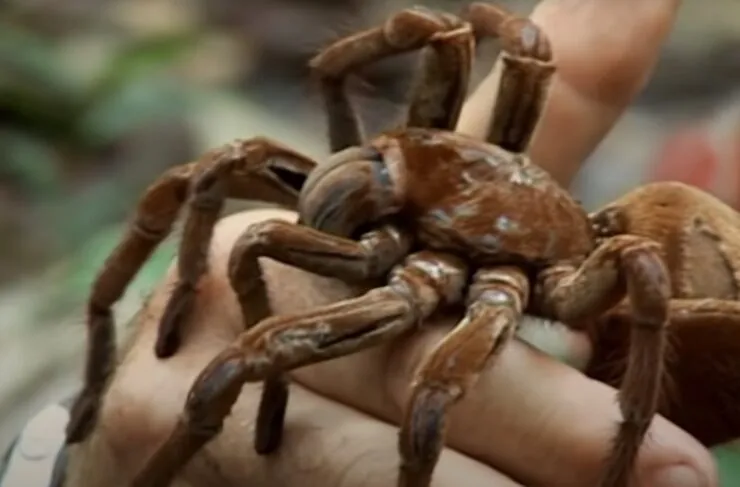
The Oklahoma Brown Tarantula typically inhabits grasslands and open areas with well-drained soil. It constructs burrows, which serve as a safe haven during the day and a strategic position for hunting prey. Their diet consists of insects and other small invertebrates, which they ambush from their burrows. The presence of these spiders can be an indication of the overall health of the ecosystem, as their diet directly affects the balance of insect populations. Their habitats also include locations with various plant life, providing a good hunting ground for the tarantulas. The habitat of this species is crucial for its survival.
The Oklahoma Brown Tarantula’s Behavior
The Oklahoma Brown Tarantula, like other tarantulas, is primarily active at night. They are ambush predators, waiting for the opportunity to capture prey. Mating behavior involves complex rituals. The females often live for many years, while males usually have a shorter lifespan after mating. Observing their behavior, though often difficult due to their nocturnal nature, offers valuable insights into their survival strategies and ecological role. These tarantulas play a vital role in the ecosystems, helping to regulate insect populations and maintain ecological balance. Their behaviors showcase the importance of these creatures.
Texas Black Tarantula (Aphonopelma echinum)
The Texas Black Tarantula (Aphonopelma echinum) presents a striking contrast to the more common brown and tan tarantulas found in the state. Known for its distinctive black coloration, this species offers a captivating sight for those fortunate enough to encounter it. It is not as widely distributed as some other tarantula types in Texas, but it still plays an essential role in its habitat. This species’ presence demonstrates the rich variety within the state’s arachnid community. They are quite distinct and possess unique survival strategies that have allowed them to inhabit specific regions of Texas. The Texas Black Tarantula is a crucial aspect of the Texan ecosystem.
Appearance of the Texas Black Tarantula
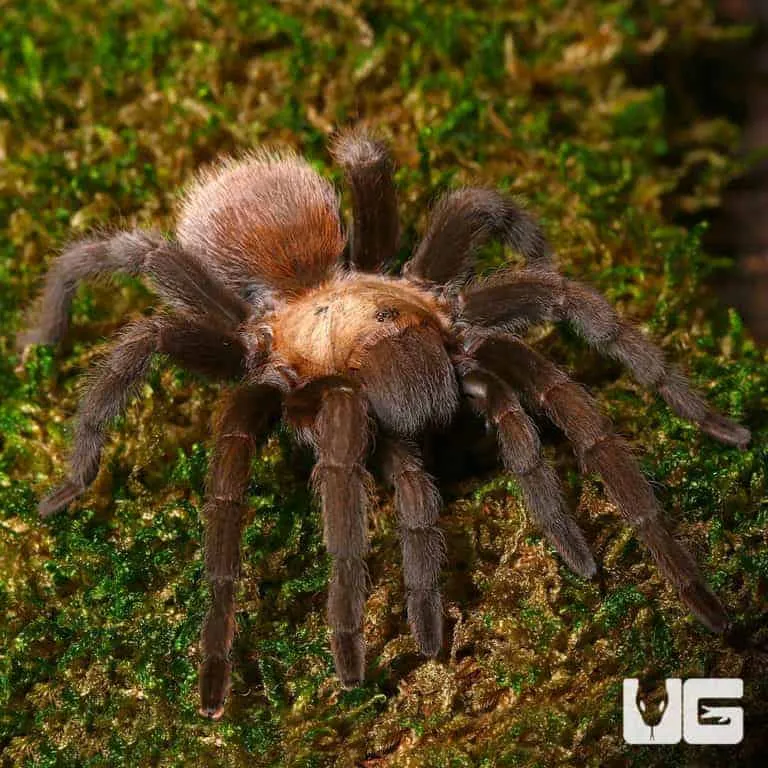
The Texas Black Tarantula’s defining characteristic is its dark, typically black, coloration. The bodies are covered in dense, velvety hairs, giving them a sleek appearance. The contrast of the black body against the often lighter-colored landscape makes them easily recognizable. Examining their features, such as the arrangement of eyes and the structure of the fangs, can assist in identifying this species. The overall appearance reflects an adaptation to its habitat, providing camouflage and contributing to its predatory success. The Texas Black Tarantula’s dark appearance distinguishes them from the more commonly seen brown and tan species.
Texas Black Tarantula Environment
The Texas Black Tarantula often inhabits arid and semi-arid environments, including grasslands, scrublands, and rocky areas. They construct burrows, which provide protection from the elements and serve as a base for hunting. Their habitat often includes a mix of vegetation and well-drained soil, allowing them to thrive. This species is adapted to the harsh climate, with their dark coloration possibly aiding in absorbing heat. Their presence indicates a healthy and diverse ecosystem. The environment of the Texas Black Tarantula is crucial to their survival and well-being.
Understanding the Texas Black Tarantula’s Diet
The Texas Black Tarantula, like other tarantulas, is a carnivore. Their diet primarily consists of insects, such as crickets, grasshoppers, and beetles, but they are also known to consume other arthropods and, occasionally, small vertebrates. They are ambush predators, waiting for prey to come close to their burrow before launching a swift attack. This hunting strategy has contributed to their success. The ability to find and capture prey is an essential factor in their survival. The diet of the Texas Black Tarantula highlights their role in maintaining the balance of the local ecosystem. Their feeding habits showcase their function as predators.
Desert Blonde Tarantula (Aphonopelma chalcodes)
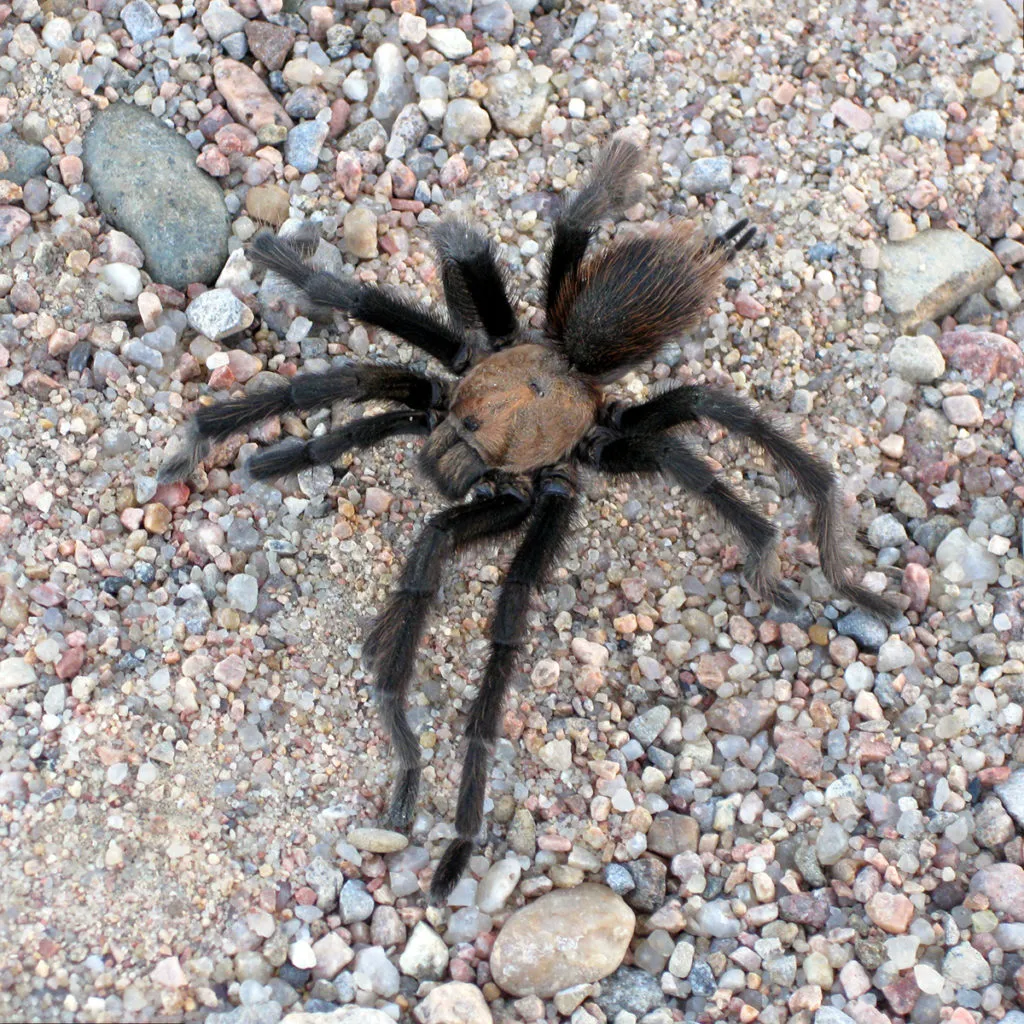
The Desert Blonde Tarantula (Aphonopelma chalcodes) is a striking species found in the arid regions of Texas. Its blonde coloration provides exceptional camouflage within its desert habitat, making it a skilled predator. The Desert Blonde Tarantula is a well-adapted species to the harsh desert environment, showcasing remarkable survival adaptations. Its presence adds to the rich biodiversity in the state. The beauty and resilience of this tarantula make it an important element of the local ecosystems. Understanding this species and its behaviors can increase our respect for the diversity of life within Texas.
The Desert Blonde Tarantula’s Appearance
The Desert Blonde Tarantula is recognized by its light tan or blonde coloration. Its body is covered in fine hairs, providing a soft appearance. Their coloration is a significant advantage for camouflage in their desert environment. They typically have a leg span of several inches, and their overall appearance reflects their role as efficient predators. Examining their features, such as eye arrangement and fang structure, is essential for identification. Their coloration serves as both camouflage and protection from the elements. The light-colored appearance allows them to blend easily into their surroundings.
Desert Blonde Tarantula Habitat and Range
The Desert Blonde Tarantula’s habitat includes arid and semi-arid environments, such as deserts, grasslands, and scrublands. They often construct burrows in areas with sandy or loamy soil. These burrows provide protection from the extreme heat and serve as a base for hunting. Their range includes the southwestern United States, including parts of Texas. They are well-adapted to the harsh conditions. They typically choose areas with a combination of suitable soil and the availability of prey. The habitat of the Desert Blonde Tarantula supports its unique behaviors.
Desert Blonde Tarantula Diet and Behavior
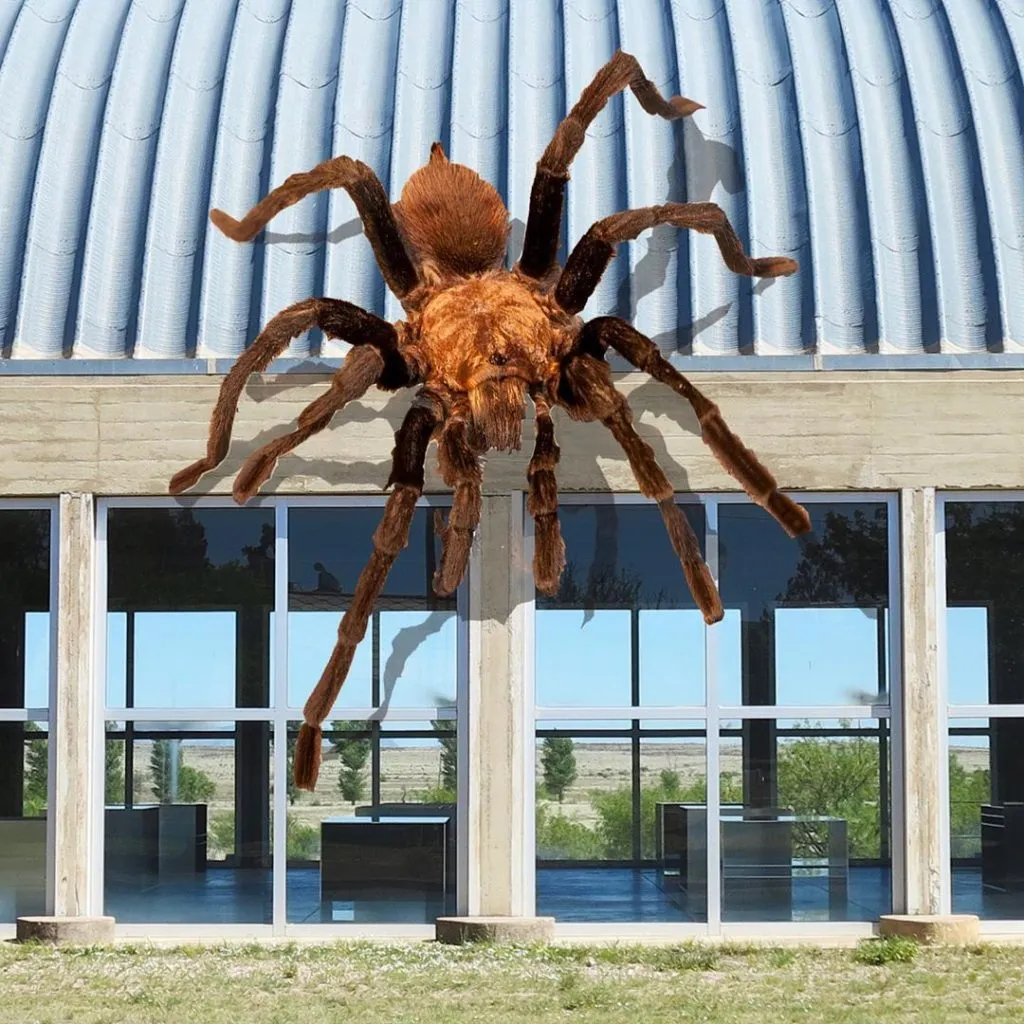
The Desert Blonde Tarantula is a nocturnal predator, primarily active during the night. Their diet mainly consists of insects, such as crickets, grasshoppers, and beetles, but they are also known to consume other arthropods and sometimes small vertebrates. They are ambush hunters, waiting for prey to come close before striking. The females can live for many years, while males typically have a shorter lifespan after reaching maturity. Their behavior, adapted for survival in the desert, includes the ability to conserve water and withstand high temperatures. Their hunting techniques and nocturnal activity are key adaptations for their environment.
Tarantula Conservation in Texas
Conservation efforts are vital for protecting tarantula populations in Texas, as they face habitat loss and other threats. Conservation strategies should incorporate habitat preservation and public education. Public awareness is key to ensuring the survival of these arachnids, focusing on the importance of their role in the ecosystem. This also includes creating and supporting habitat protection to ensure their survival. Promoting ethical practices, such as responsible pet ownership, can minimize the impact of human activities. Conservation ensures that these creatures continue to inhabit the state.
Protecting Texas Tarantula Habitats
Protecting the habitats of Texas tarantulas involves several critical steps, including preventing habitat destruction through responsible land management. Supporting conservation organizations that focus on habitat preservation, and supporting the creation of protected areas where tarantulas can thrive, is also important. Educating the public about the value of these spiders and their role in the ecosystem is essential, and also creating awareness can make an impact. Encouraging sustainable practices, such as responsible agriculture and minimizing pesticide use, helps maintain the health of the environment. Conservation supports the continued existence of tarantulas.
